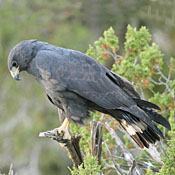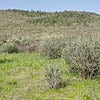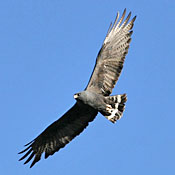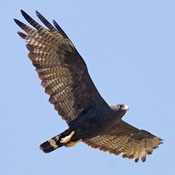
Hawk Like
Zone-tailed Hawk
Buteo albonotatus

Length: 20 in. (51 cm )
This hawk occurs far into South America in a wide variety of habitats, and in North America it is found from mountain forests down to lowland riparian areas and desert grasslands. It is typically solitary and soars with its wing tips held up in a distinctive broad \V\-shape that resemble a Turkey Vulture in flight. It regularly flies in among Turkey Vultures, and this similarity may help the hawk sneak closer to capture lizards, snakes and small mammals that have learned that Turkey Vultures are not dangerous. The nest is a large platform of sticks placed high in a tree crotch in a broad band of altitudes.
The four-digit banding code is ZTHA.
Aerial

Chaparral

Desert
Fir forest
Oak-pine woodland
Riparian / River forest

Shrubs
View Citation
Be Part of
Ask A Biologist
By volunteering, or simply sending us feedback on the site. Scientists, teachers, writers, illustrators, and translators are all important to the program. If you are interested in helping with the website we have a Volunteers page to get the process started.












